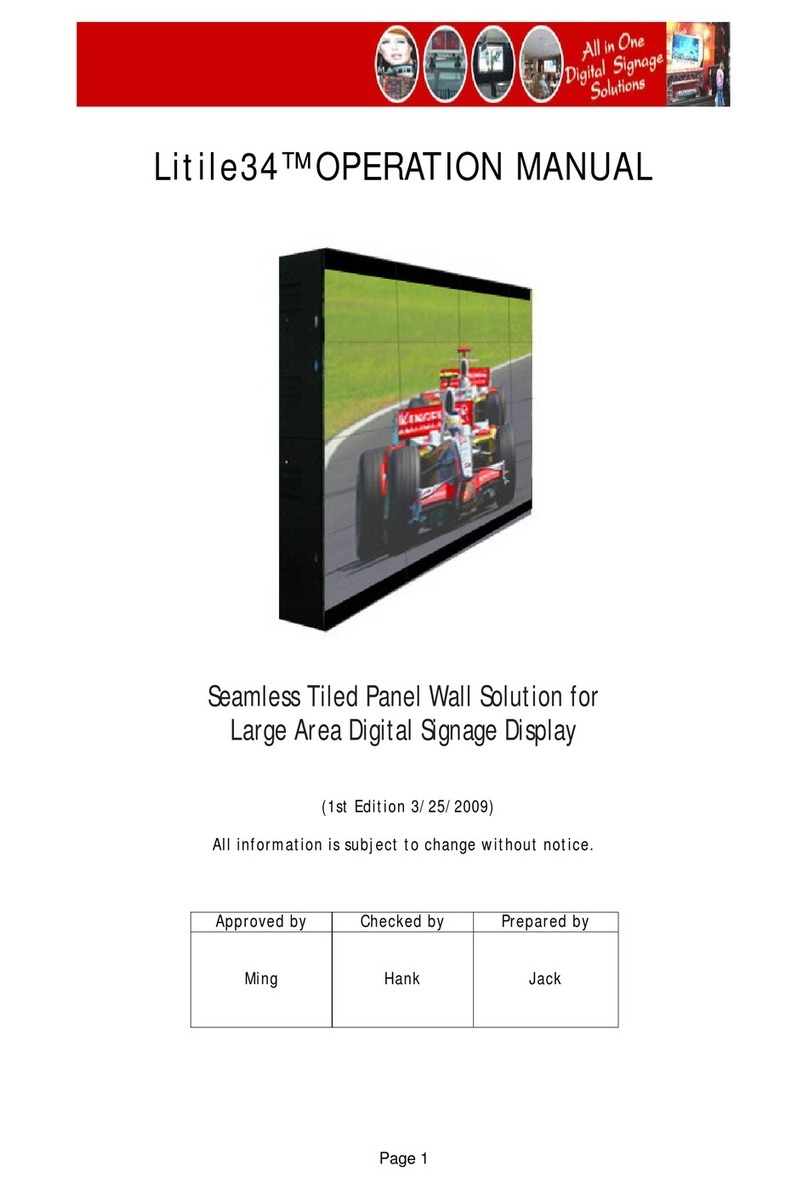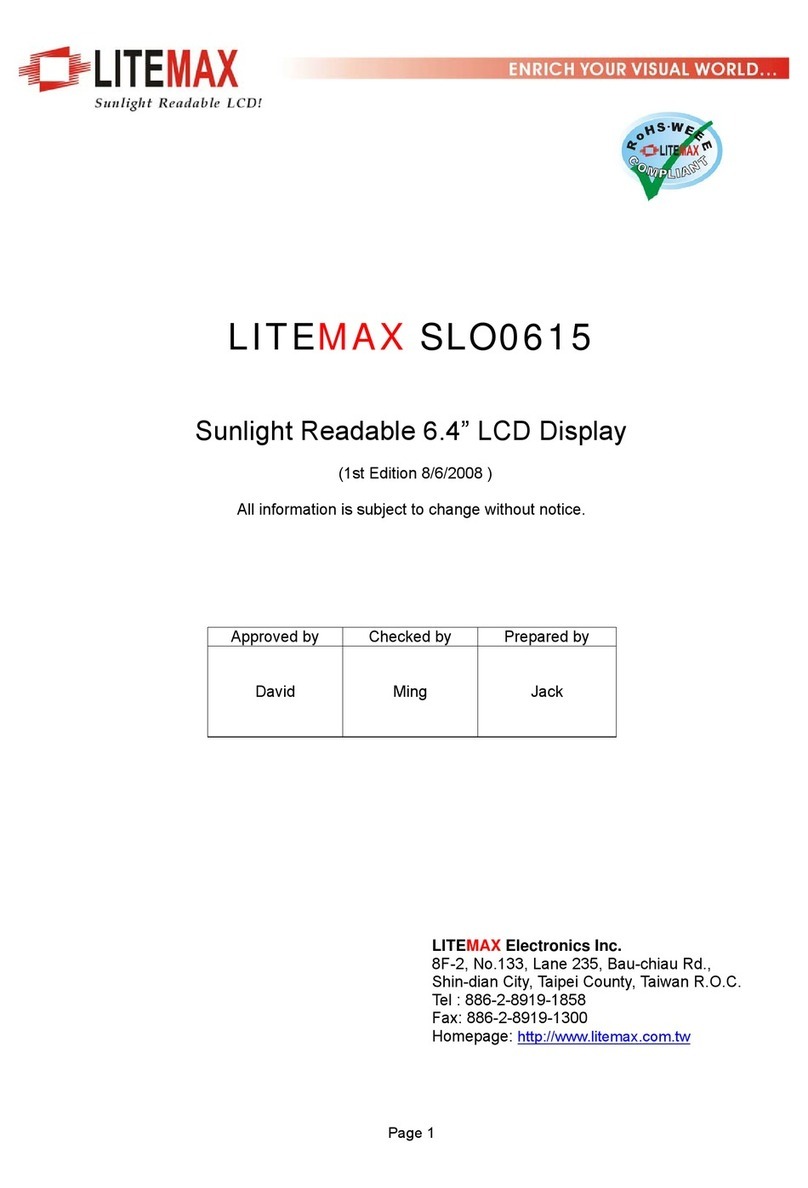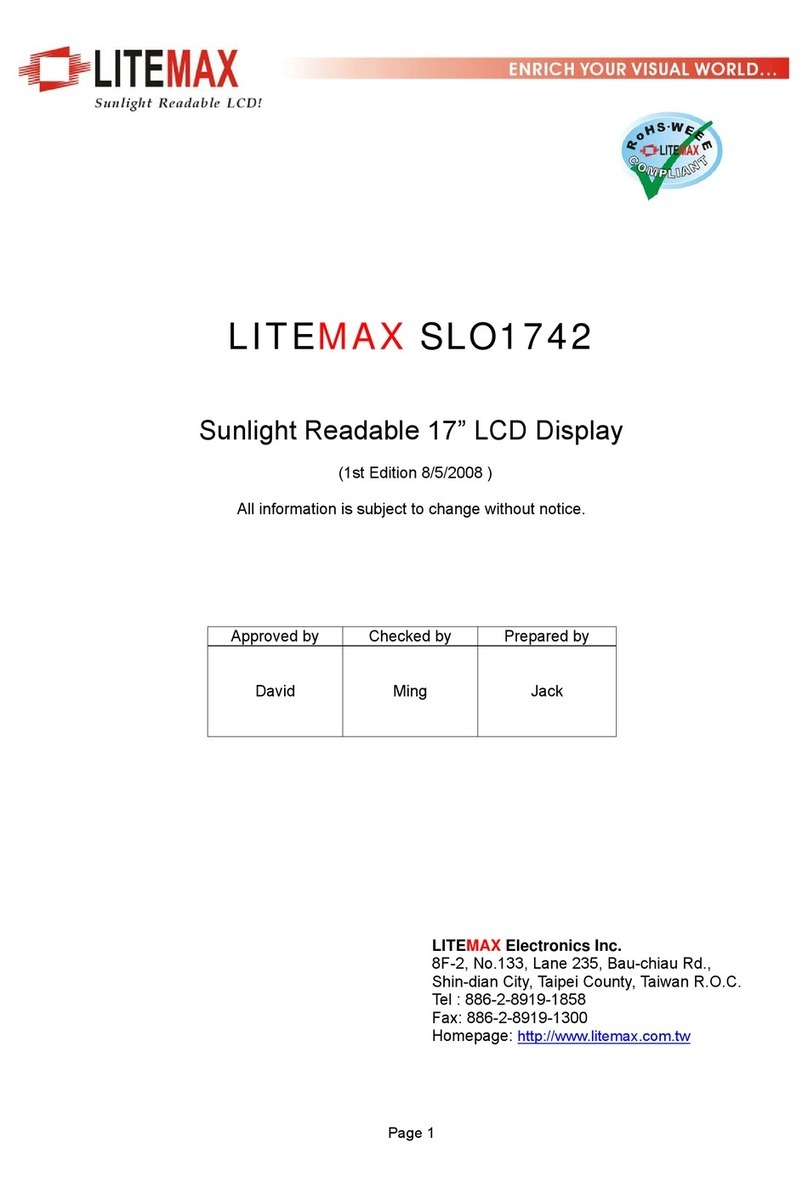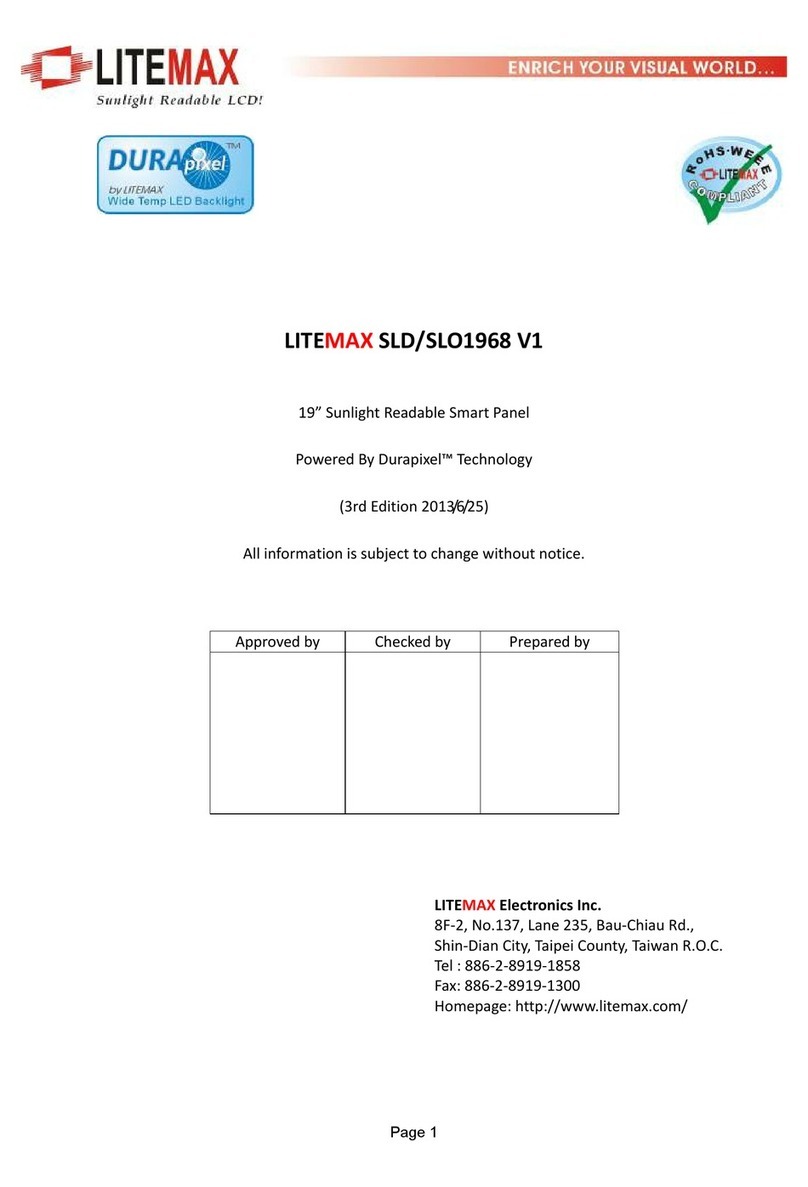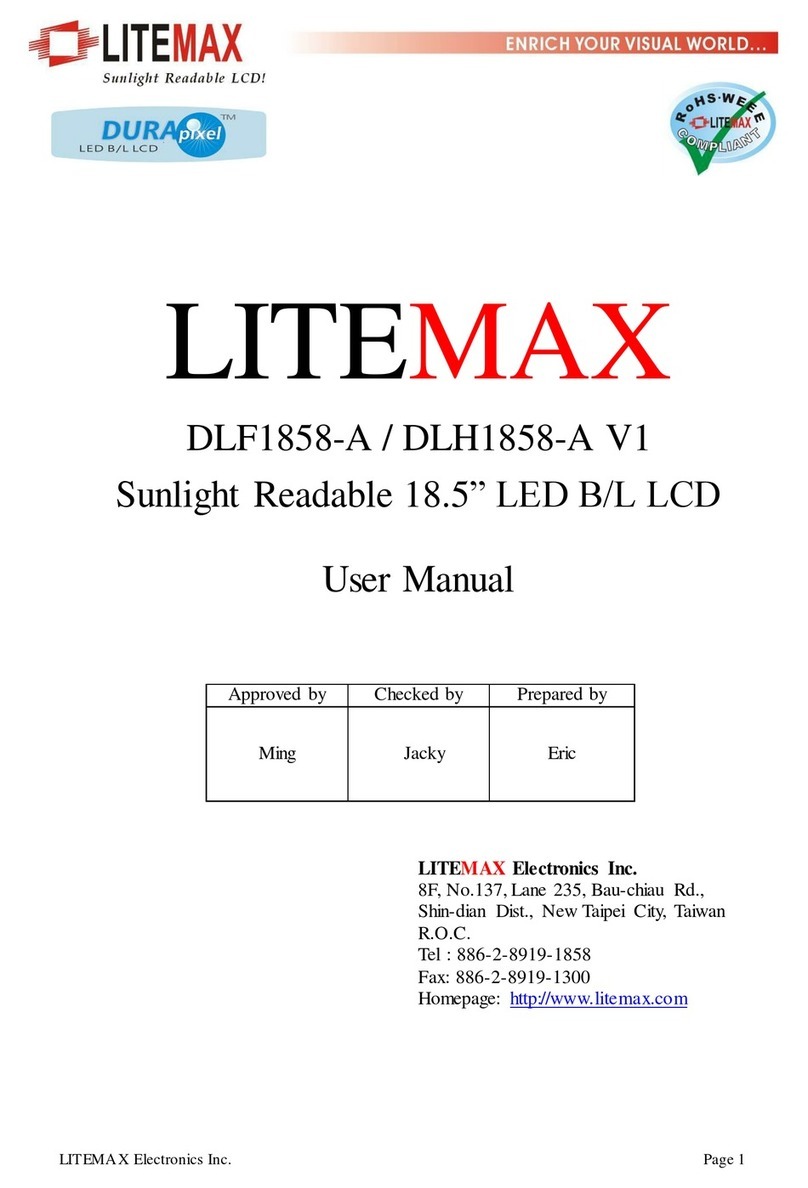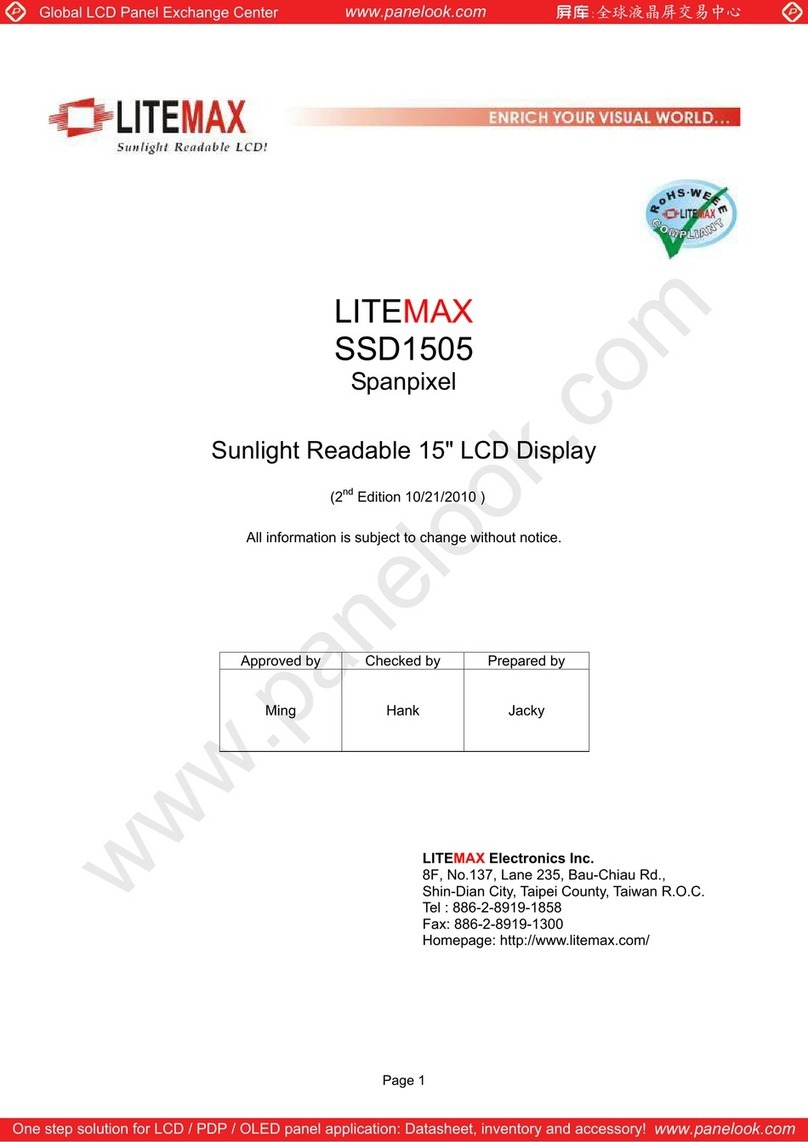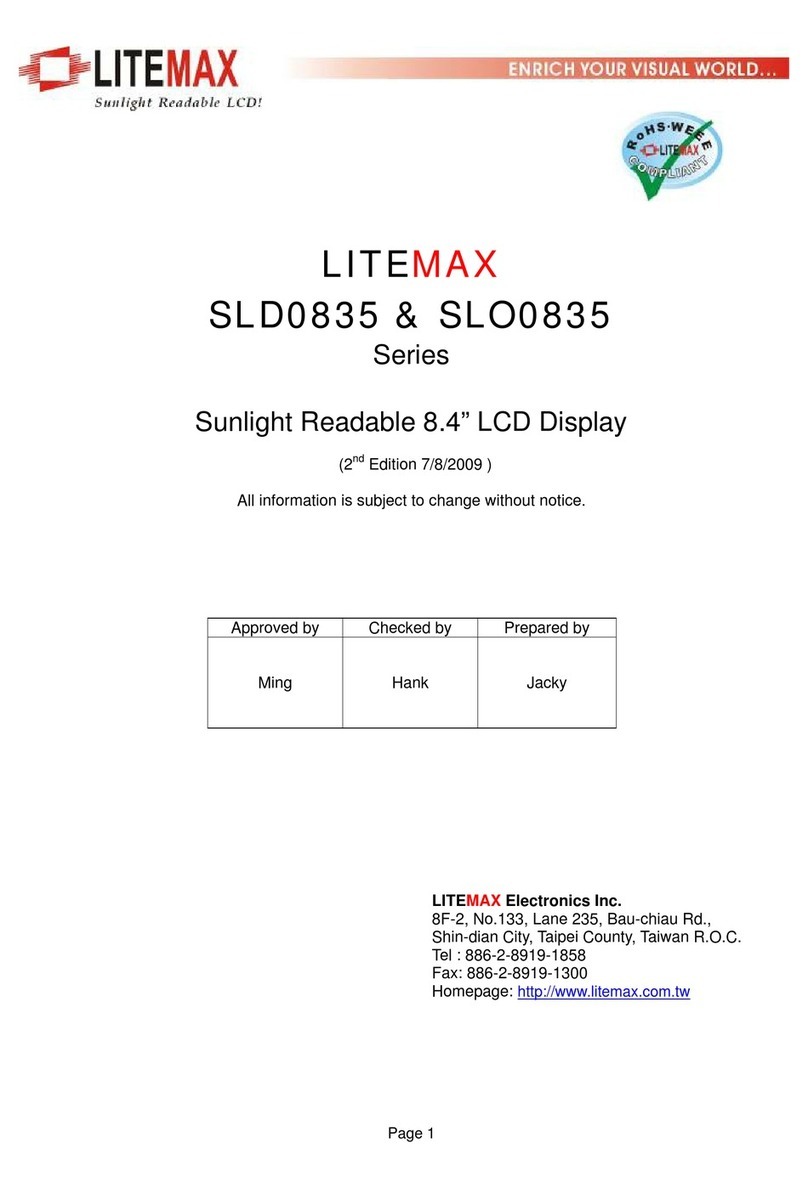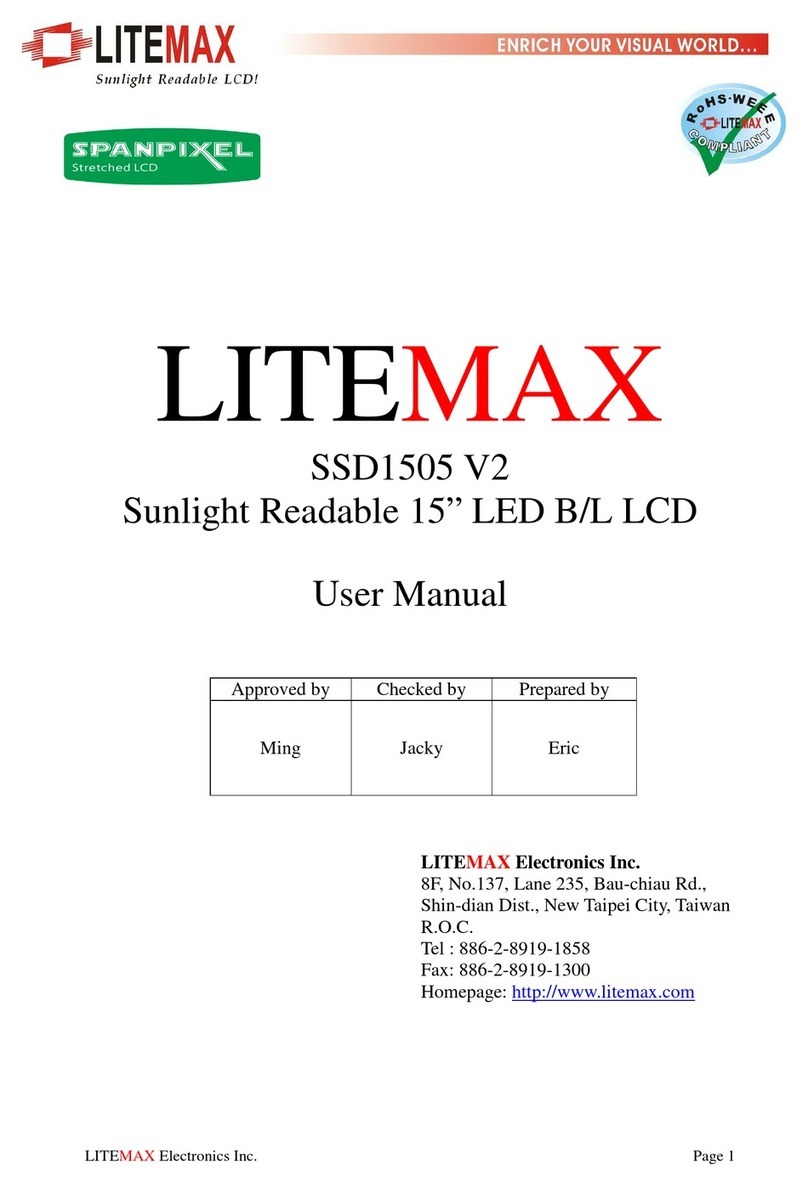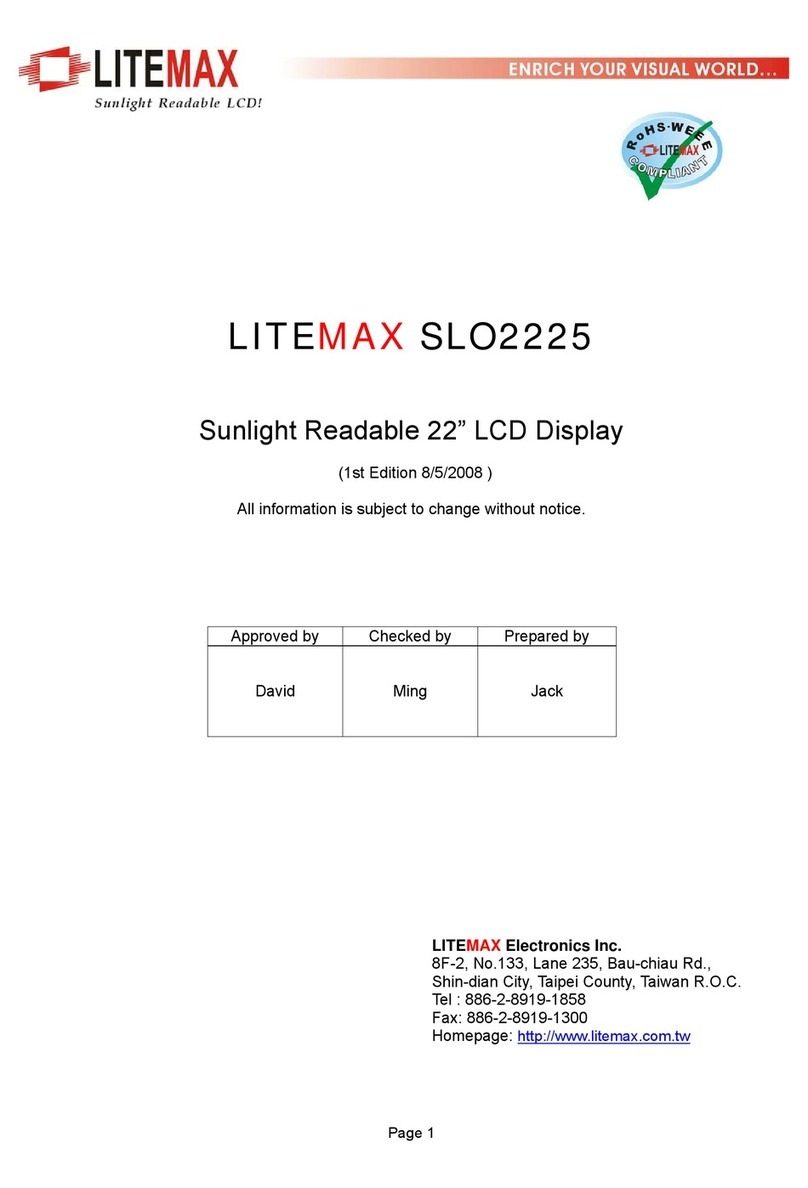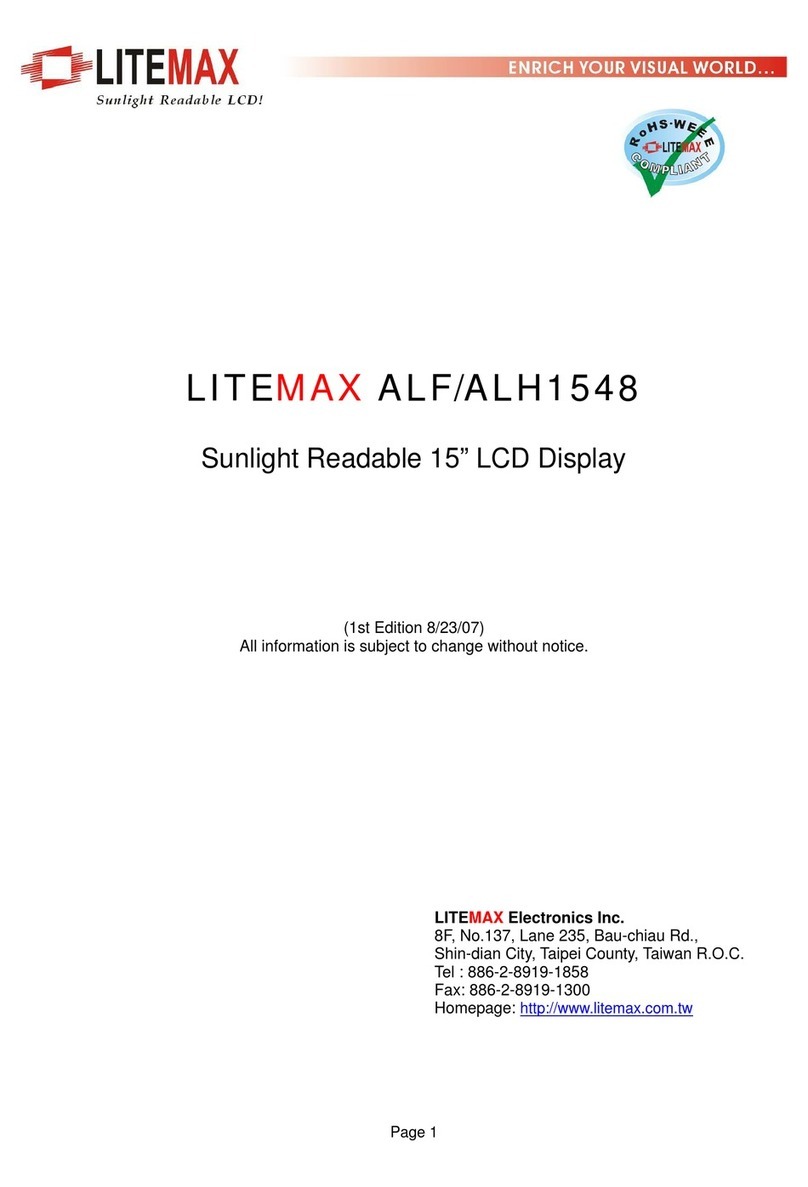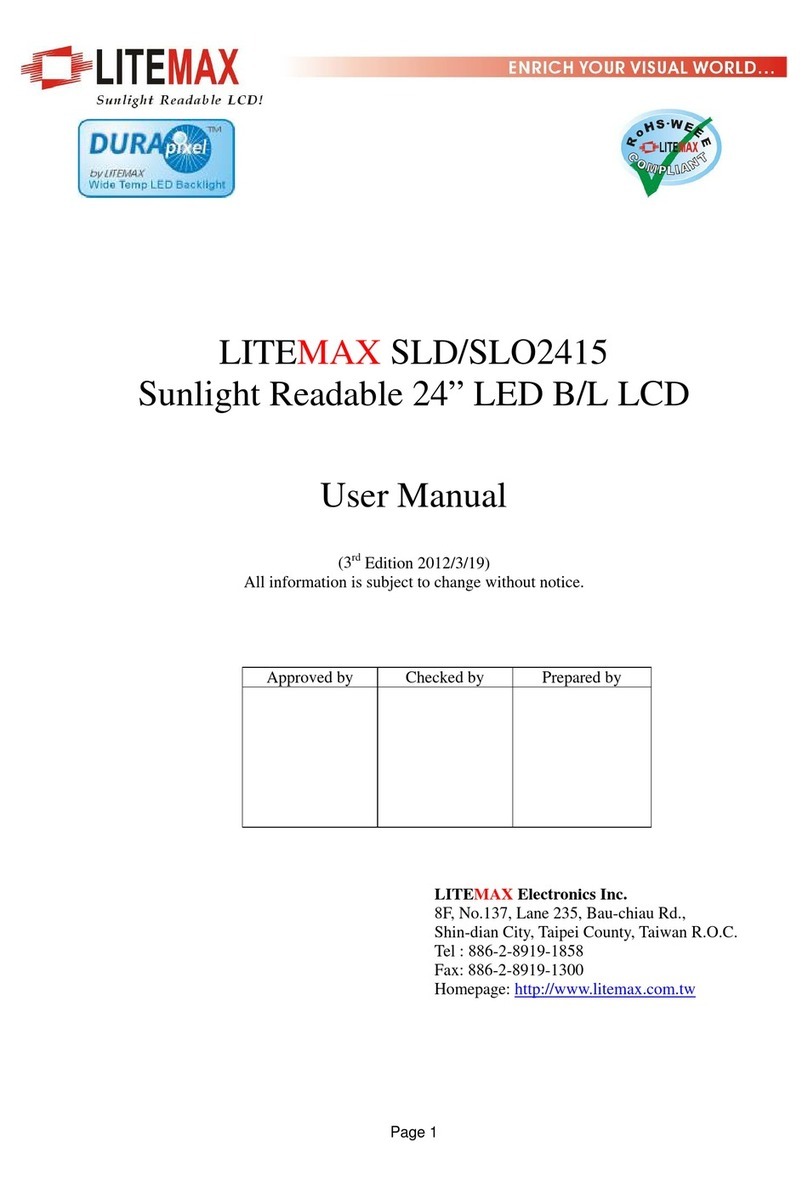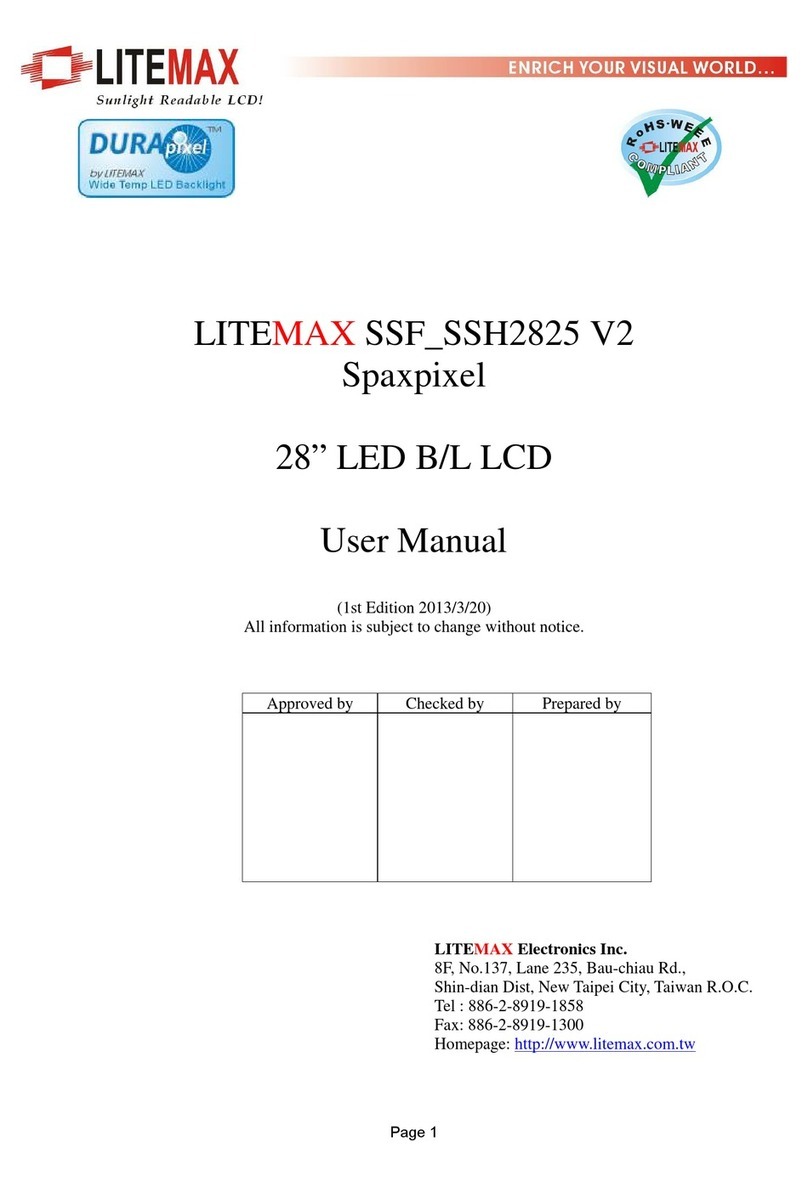Page 10
Input signal timing
Timing diagrams of input signal are shown in Fig 2.
(1). Timing characteristics of input signals
DE mode
Item Symbol Min. Typ. Max. Unit Remark
Clock frequency Fck 38 40 50 MHz
Horizontal blanking Thb1 235 256 500 Clk
Horizontal display period Thd - 800 - Clk
Horizontal sync. period Th 1035 1056 1300 Clk
Vertical frequency - 46 60 76 Hz
Vertical blanking Tvb1 20 28 150 Th
Vertical display width Tvd - 600 - Th
Vertical sync. period Tv 620 628 750 Th
H/V mode
Item Symbol Min. Typ. Max. Unit Remark
Clock frequency Fck 38 40 50 MHz
Horizontal display period Thd 1030 1056 1060 Clk
Hsync front porch Thf 184 210 214 Clk
Hsync width+back porch Thw+Thb 46 46 46 Clk
Hsync blanking Thb1 230 256 260 Clk
Vsync period Tv 628 628 628 Th
Vsync front porch Tvf 1 1 1 Th
Vsync blanking Tvb1 28 28 28 Th
Item Symbol Value Unit Description
Horizontal display start The 46 Clk After falling edge of Hsync, counting 46 clk,
then getting valid data from 47th clk ’s data.
Vertical display start Tve 27 Th After falling edge of Vsync, counting 27T h,
then getting 28th Th’s data.
Note 1:Clock falling edge latch the data.
Note 2:H/V is negative polarity.
Display position

